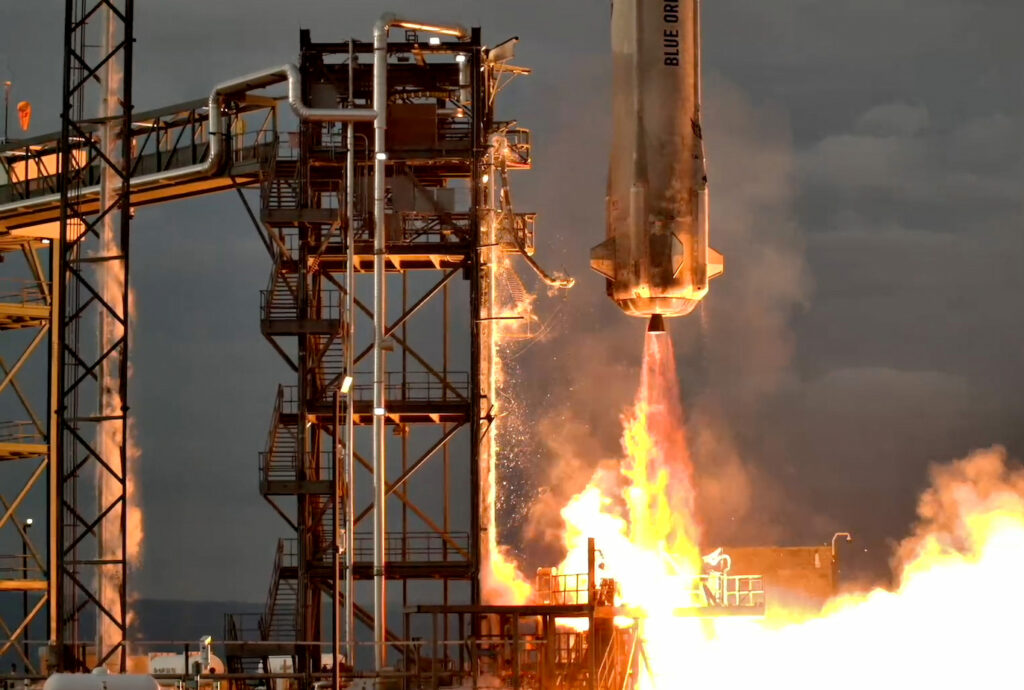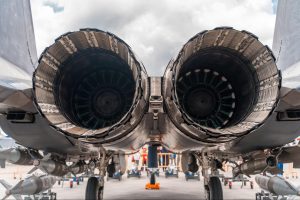On October 8, 2025, Blue Origin successfully launched NS‑36*, its 36th New Shepard flight and 15th human mission. The rocket lifted off from Launch Site One in West Texas, carrying six space tourists, including one mystery passenger, on a suborbital journey that lasted 10 minutes and 21 seconds.
Blue Origin’s mission was celebrated as a clean success – no anomalies, full recovery of both booster and capsule, and all systems nominal. The first stage booster returned to Earth and performed vertical landing – a hallmark of their reusable architecture. The capsule separated and descended safely under parachutes, touching down in the desert near the launch site. And the mission reached an altitude just about the Kármán line (~66 miles / ~107 km), crossing into recognized space.
*Read more about the NS-36 mission here
Behind the Scenes: Why Every Detail Had to Be Perfect
Spaceflight is unforgiving. Every bolt, weld, seal, and internal cavity must perform exactly as intended under thermal stress, vibration, pressure loads, and repeated reuse cycles. A flaw too small to see can become catastrophic in the harsh conditions beyond Earth.
Consider these internal systems that demand rigorous inspection:
- Engine nozzles, turbopump lines, and plumbing
- Internal pressure vessels and tank interfaces
Separation mechanisms that must release cleanly and reliably - Avionics housings and wiring bundles behind sealed panels
- Thermal shielding layers and insulation gaps
Before launch, each subsystem must be inspected not just visually but via methods that confirm structural integrity, absence of cracks or corrosion, and alignment tolerances. Post-flight, many components are inspected again to assess wear and guarantee safety for reuse.
The Role of NDT Inspections in Space Missions
If you’re building or supporting spacecraft, you already know: non-destructive testing (NDT) is central to mission success. Here’s how it ties in:
- Preflight Verification
- Use borescopes to examine internal joints, weld roots, and hidden interfaces.
- Verify that no casting voids or stress risers exist.
- Inspect internal passages and manifolds without disassembly.
- Post-Flight Analysis
- Detect micro-cracks, fatigue, or foreign-object damage (FOD) from reentry or handling.
- Compare “before vs after” imagery to measure degradation.
- Traceability & Compliance
- Capture timestamped photos and videos linked to component serial numbers.
- Archive inspection data for audits, refurbishment decisions, or flight certification.
- Design Feedback
- Use inspection data to refine tolerances, improve joint designs, and reduce failure modes in the next flight iteration.
At SPI Borescopes, we build inspection systems designed for the harshest environments, from industrial turbines to defense and aerospace. For missions like NS‑36, our tools can:
- Capture ultra-clear images inside tight cavities
- Operate under vibration, thermal cycling, and pressure changes
- Export inspection logs in flight-ready formats
- Support modular probe designs to reach complex geometries
When every inspection could be mission-critical, our tools help engineers see the unseen and trust the results when lives and billions of dollars are on the line.
TLDR:
Blue Origin’s NS‑36 proves that private spaceflight is advancing fast. But successful missions depend on what you can’t see – internal integrity, joint performance, and reliability under stress. That’s where inspection becomes more than quality control; it becomes mission assurance.
If you’re preparing spacecraft hardware, testing ground systems, or qualifying components for flight, SPI Borescopes is ready to help you level up your inspection strategy!
Contact us to explore how we can support your next mission’s inspection pipeline.
Related Articles
A recent EASA survey found that aviation professionals are cautiously optimistic about AI in aviation safety, rating acceptance at 4.4 out of 7.
The FAA’s 2025 maintenance compliance updates introduce stricter documentation requirements, enhanced digital inspection tracking, and expanded training mandates for aerospace technicians.
In the aviation and aerospace industries, safety and reliability are paramount. Regular maintenance and rigorous quality assurance processes are critical to ensuring that aircraft operate efficiently and safely.



